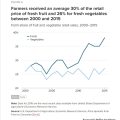Two major events might happen concurrently in the next week ? a government shutdown, and the resumption of student loan repayments, which have been on hold since March 2020 thanks to a pandemic-era relief policy.
Let’s start with the shutdown, which will happen if lawmakers from both sides of the aisle aren’t able to strike some sort of deal on a short-term government funding bill by Oct. 1 at midnight. A shutdown wouldn’t be unheard of: Such events have happened about 20 times in the past 40 years, including once in 1995, when then-President Bill Clinton had to deal with a 26-day impasse.
Any shutdown would likely affect a vast variety of federal programs and initiatives, but financial experts are confident that it would not have a direct bearing on the status of student loan repayments. It could, however, make it hard or even impossible to get in touch with the government employees who’d ordinarily be able to help borrowers navigate the situation.
Here’s everything borrowers need to know:
What’s the current situation with the loan forgiveness plan that was put in place during the pandemic?
After multiple extensions, the loan forgiveness plan that went into effect in March 2020 is officially set to expire on Oct. 1. Technically speaking, interest on the student loans has been accruing since the beginning of September.
“In 2020, interest was deferred, so it wasn’t accruing if you weren’t paying back your loans,” said David Klyman, a financial strategist at Klyman Financial.
Klyman said the program had two components to it: Nobody was required to pay back their loan installments, and interest was not going to accrue given the lack of payments. “It was a gift for three and a half years.”
What are the chances that the payments will be suspended again?
“Nearly 44 million Americans have federal student loans, so the payments are going to resume,” Klyman said. “The chances that they will be suspended again are very low because it’s a huge burden on the government, so I’m telling all my clients to start planning on how they will pay the loans off.”
According to Klyman, student loan balances are now over $1.5 trillion, second only to mortgage-related debts. (Credit card debts are No. 3 on that ranking.) It’s no surprise, then, that the government won’t easily reimplement a forgiveness plan, shutdown or not.
The Education Department has already estimated that 28 million borrowers are expected to make payments in October.
How would a government shutdown affect student loan repayments?
It’s important to note that a shutdown would likely not infringe on the government’s plans to resume student loan repayments.
“I am telling people that a potential shutdown will not get you off the hook,” said Andrew Wang, a financial adviser at Runnymede Capital Management, Inc. “If you have a payment due in early October, you should still be gearing up to make it. Many borrowers are wondering if the drama will buy them more time, but I don’t think that’s the case.”
Klyman is also confident that folks will be required to resume repayment despite the chaos on Capitol Hill. However, he points out that if government employees are left without jobs amid a shutdown, borrowers might have a hard time navigating the system and won’t be able to consult with anyone in charge.
“The system is automated, but it is managed by government employees,” he said. “So if, for example, the website shuts down, it will be very hard to deal with that.”
Wang brings up a separate point, warning that the legislative changes might make it harder to actually borrow money for future loans. In fact, White House press secretary Karine Jean-Pierre went on the record saying that “key activities at Federal Student Aid will continue for a couple of weeks” amid a shutdown but, if prolonged, the event “could substantially disrupt the return to repayment effort and long-term servicing support for borrowers.”
What is the best way to start paying down my debt again?
Don’t panic: There are a number of payback programs available to borrowers that take into consideration a variety of factors, including a person’s salary, spending preferences, lifestyle and more. The Student Aid website offers a great loan simulator tool that will help you choose which plan is right for you.
Here are some other tips to keep in mind:
Make a plan.
Klyman and Wang both suggest sitting down and doing some budgeting to figure out how much money you currently have, how much you still owe and what you can afford to pay back each month.
“Look at your monthly expenses relative to your income: Do you need to make adjustments?” Wang said. You might want to change your cable and phone plans, for example, or “look at all the subscriptions you might not be using” to maximize the amount of cash coming in each month and minimize the outflow.
Refamiliarize yourself with your loan.
Whether you just graduated or you’ve been paying off student debt for a while, it’s time to take a hard look at the rates you’re actually paying.
Klyman advised putting money against the loans with highest interest rates first, and perhaps even considering refinancing. You never know ? you might be able to secure yourself a lower interest rate. Once again, the Student Aid loan simulator is a great way to compare different programs.
Don’t be scared to talk about what’s happening.
This is a difficult time for many people, and it’s important to keep in mind that you’re not the only one going through it.
As Klyman acknowledges, “these are serious loans.”
“You can default on credit card payments, and if you can’t pay your mortgage the bank can take your house, but these student loan payments don’t really go away,” he said. “This is a huge thing that many are scared to address. It’s a challenging time for people, and instead of hiding and hoping it will disappear, having conversations helps and will give you the guidance to get through this tough time at the beginning.”



